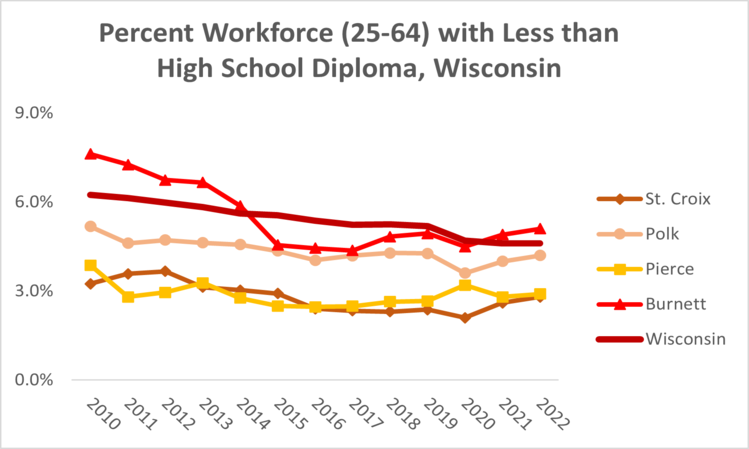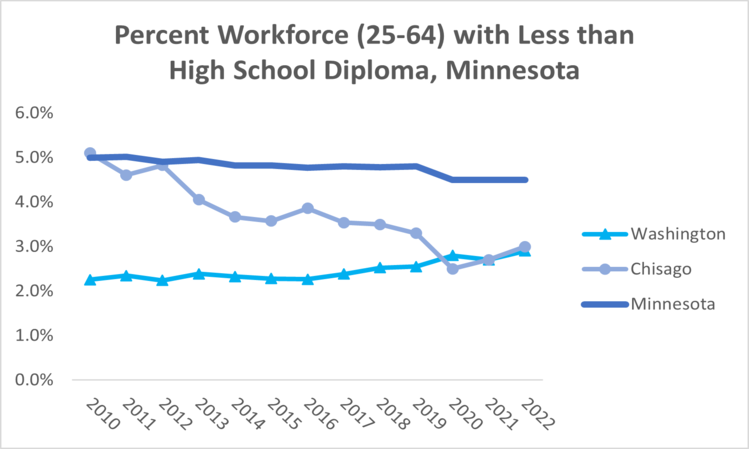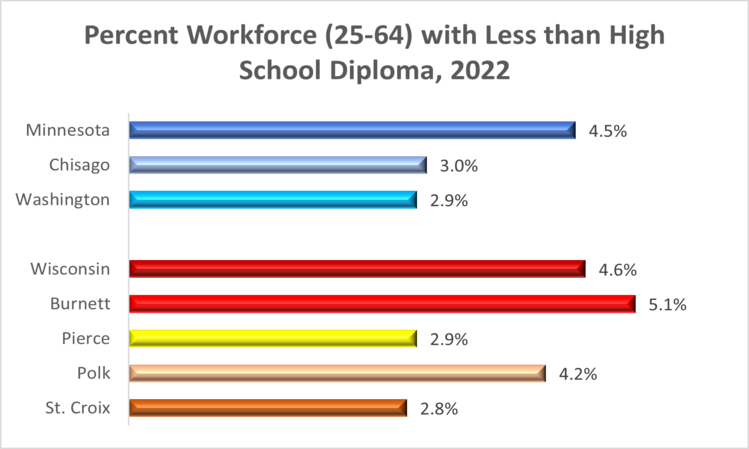UNIVERSITY OF WISCONSIN River Falls
Economic Indicators
Workforce Without a High School Diploma

- The proportion of the Wisconsin workforce that has less than a high school education has fallen by just under 2%, from 6.2% to 4.6%, over the 2010 to 2022 period.
- Burnett County moved from having a higher than state average proportion of its workforce without a high school diploma (7.6% in 2010) to below the state average (4.9% in 2019), but since 2021 has surpassed the state average again (5.1% as of 2022).
- Pierce, Polk, and St. Croix counties have consistently had lower proportions of their workforces without a high school degree relative to the Wisconsin average.

- Minnesota has seen very little change in the percent of its workforce without a high school diploma; from 5.0% in 2010 to 4.5% in 2022.
- Until 2020, Chisago County observed a substantial decline in the proportion of its workforce without a high school degree, but since then the proportion has trended upwards.
- While still well below the state average, Washington County has seen an increase in the proportion of its workforce without a high school diploma; from 2.3% in 2010 to 2.9% in 2022.

- Besides Burnett County, all other St. Croix River Valley counties have lower proportions of their 2022 workforce without a high school diploma than their respective state averages.
- Relative to the other counties in this region, Polk and Burnett have substantially higher proportions of their workforce without a high school degree.










